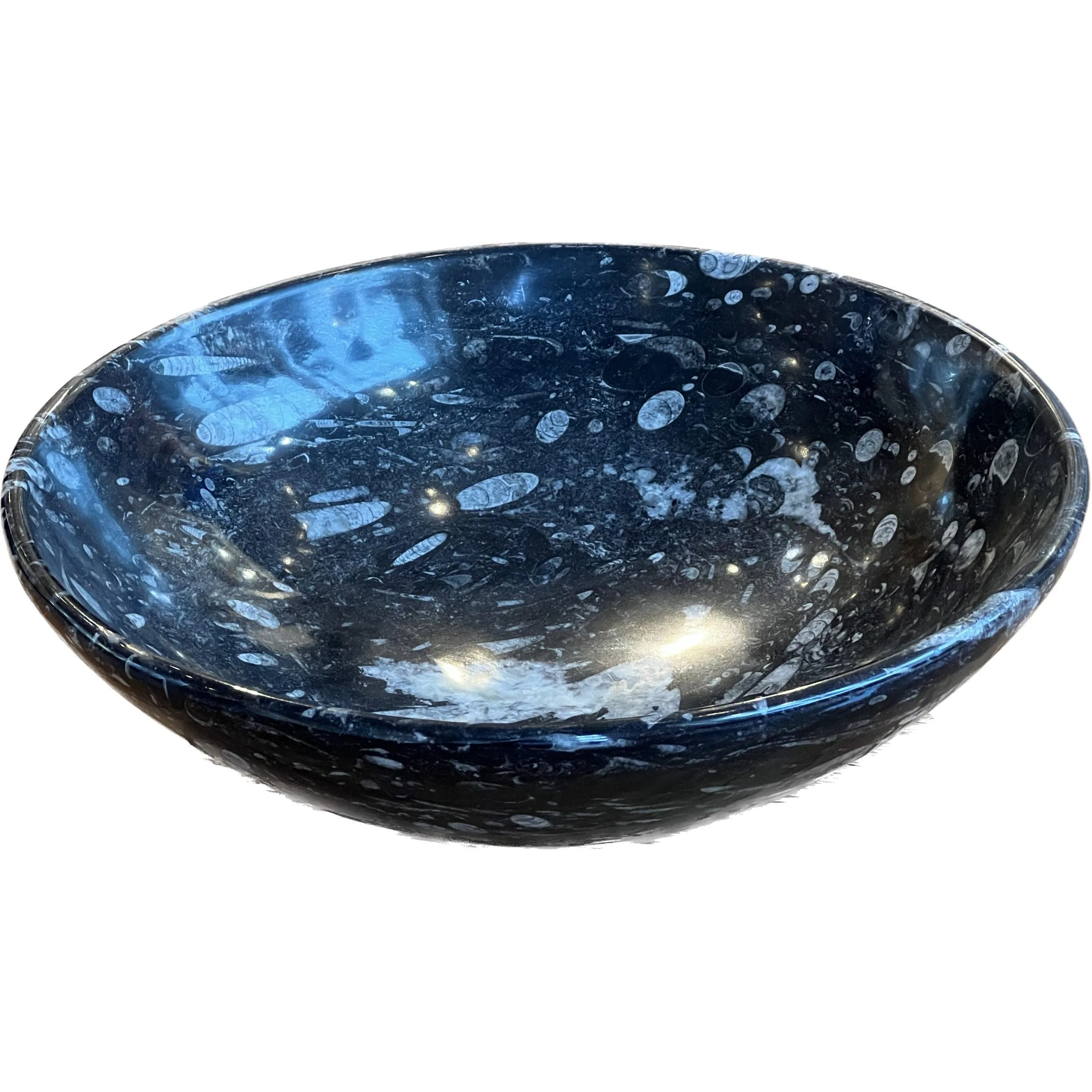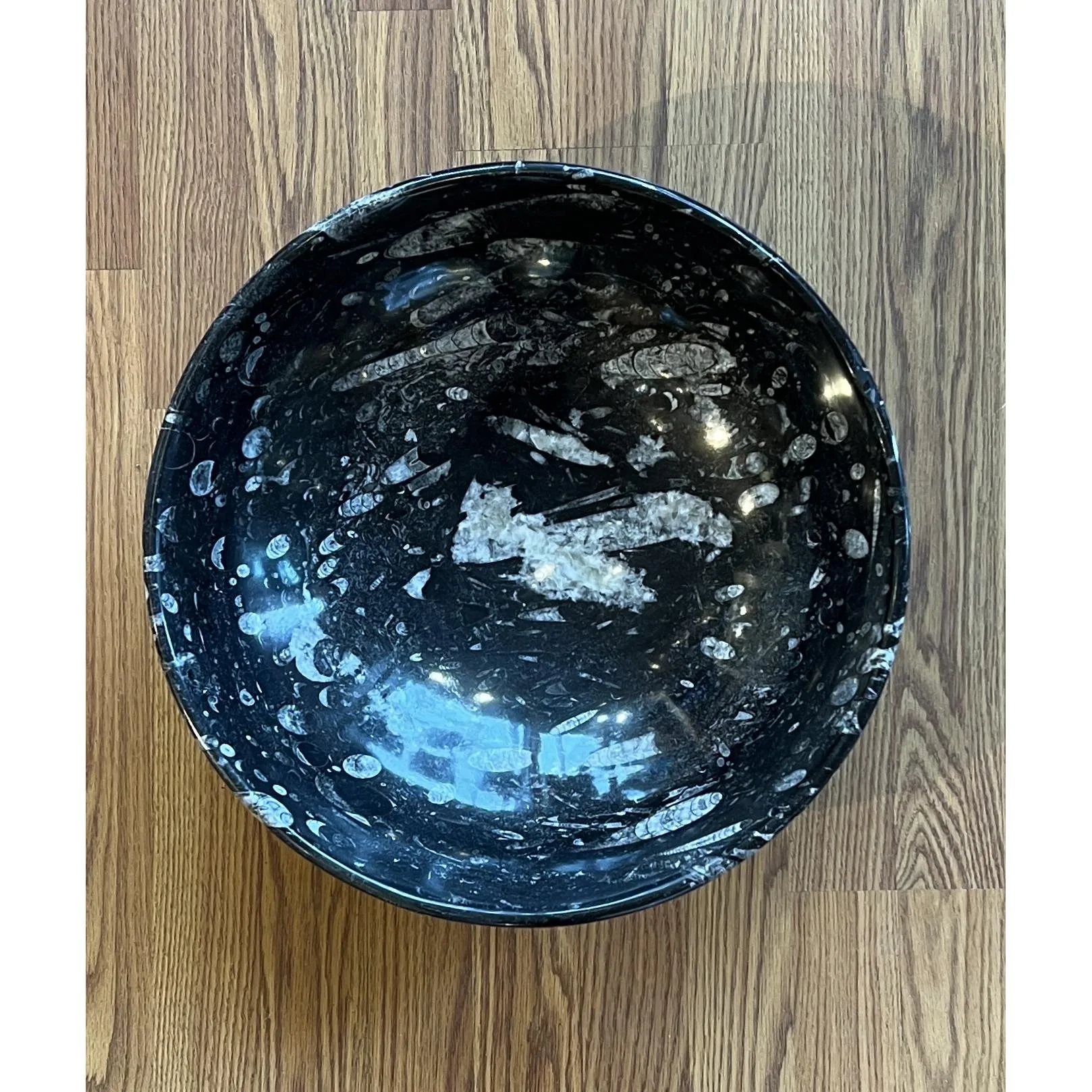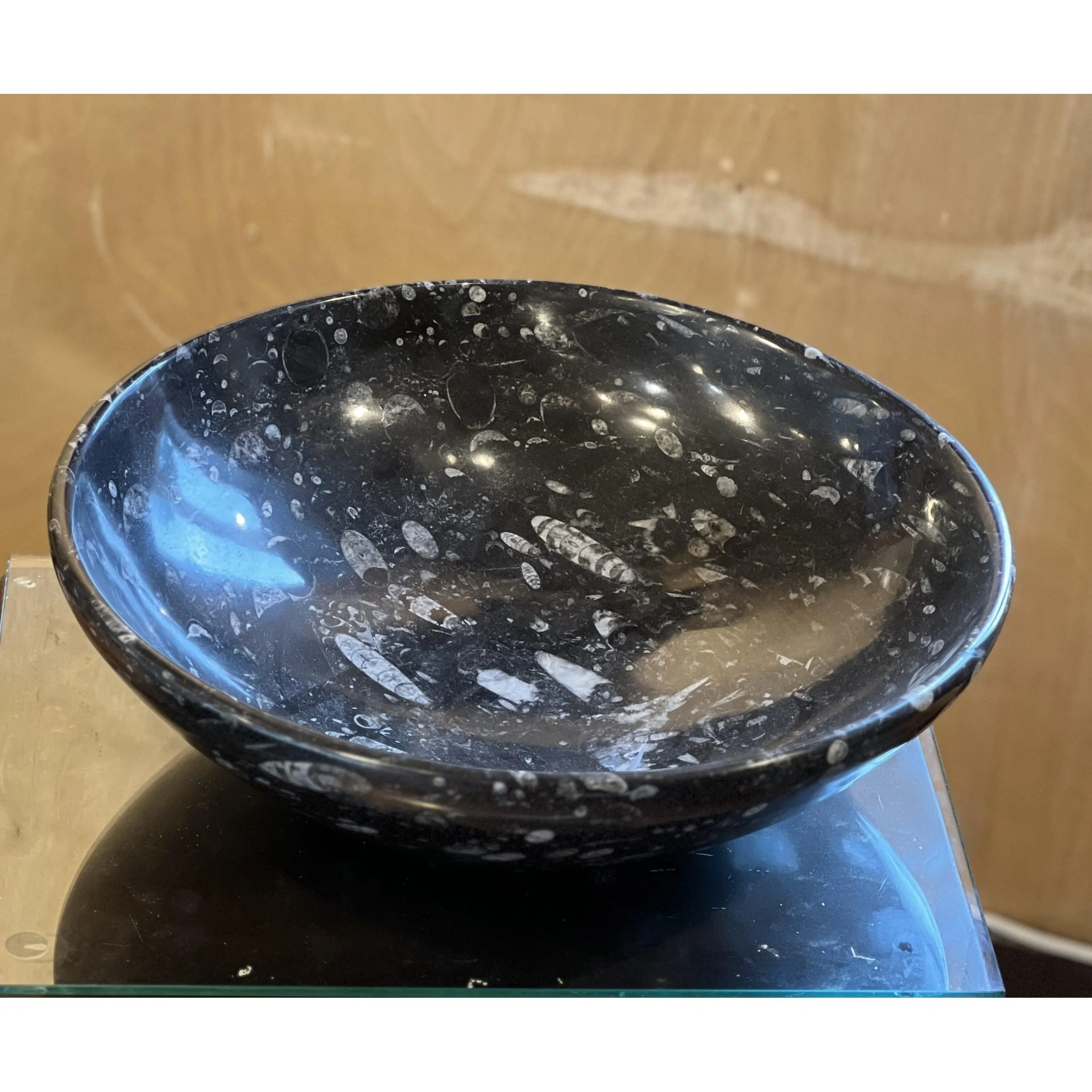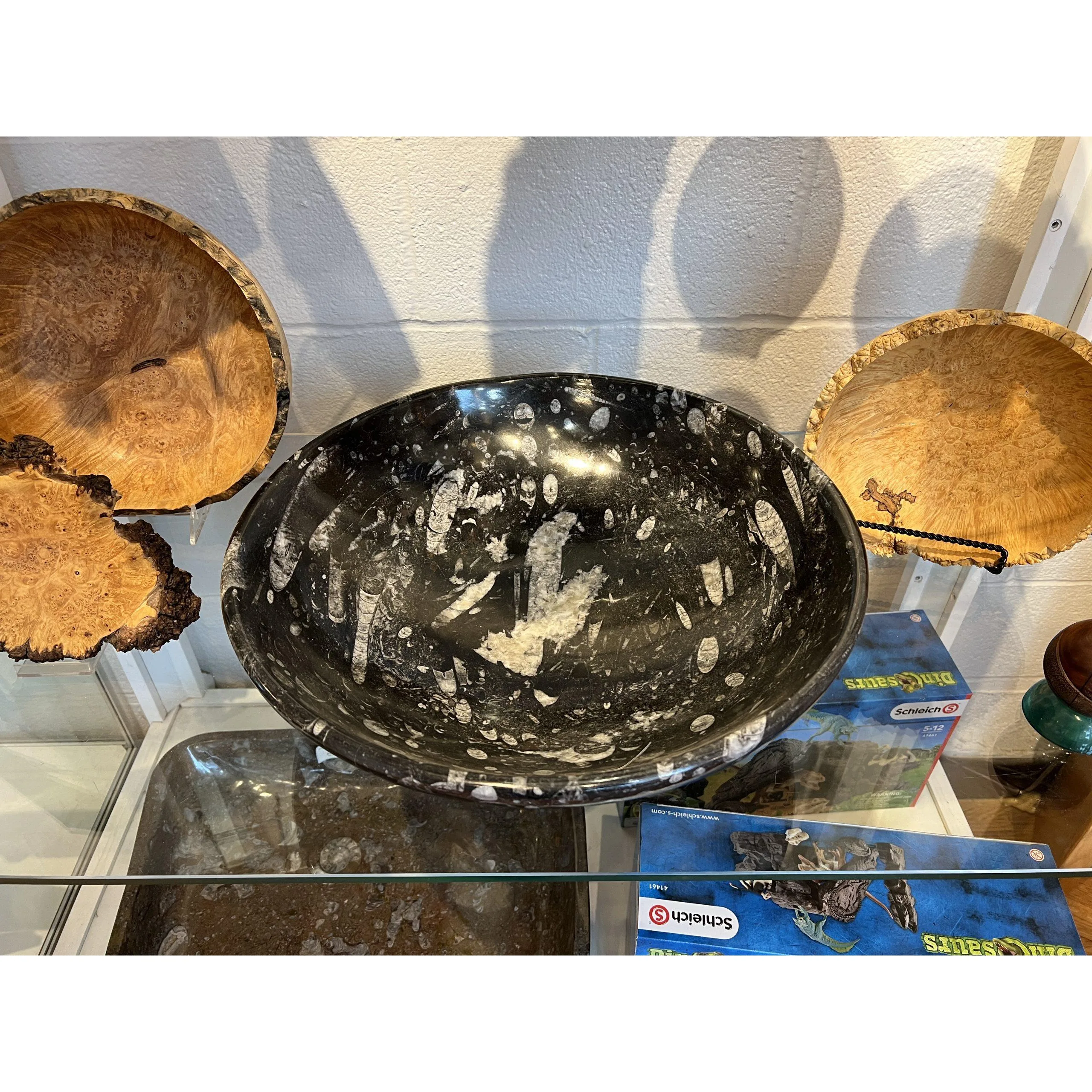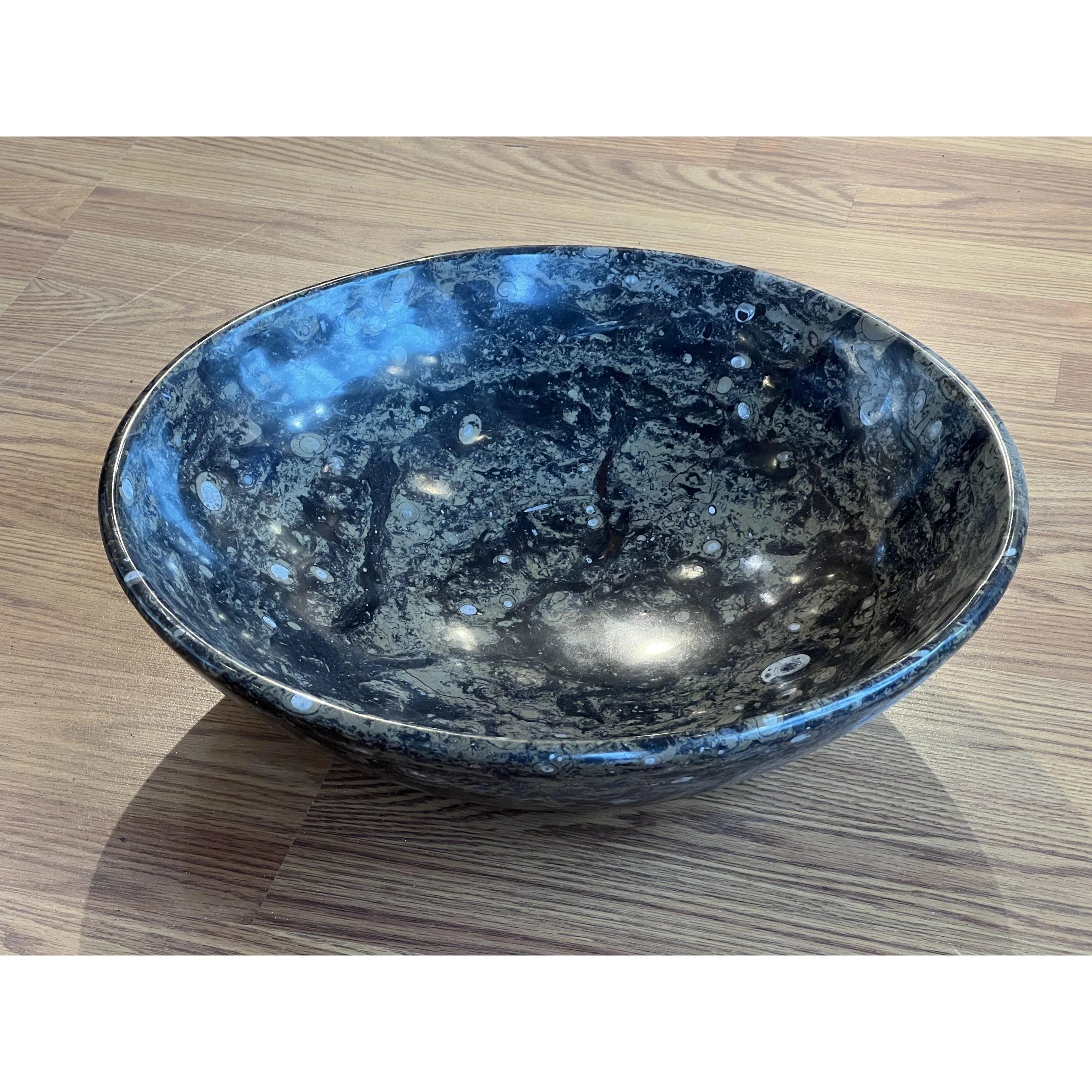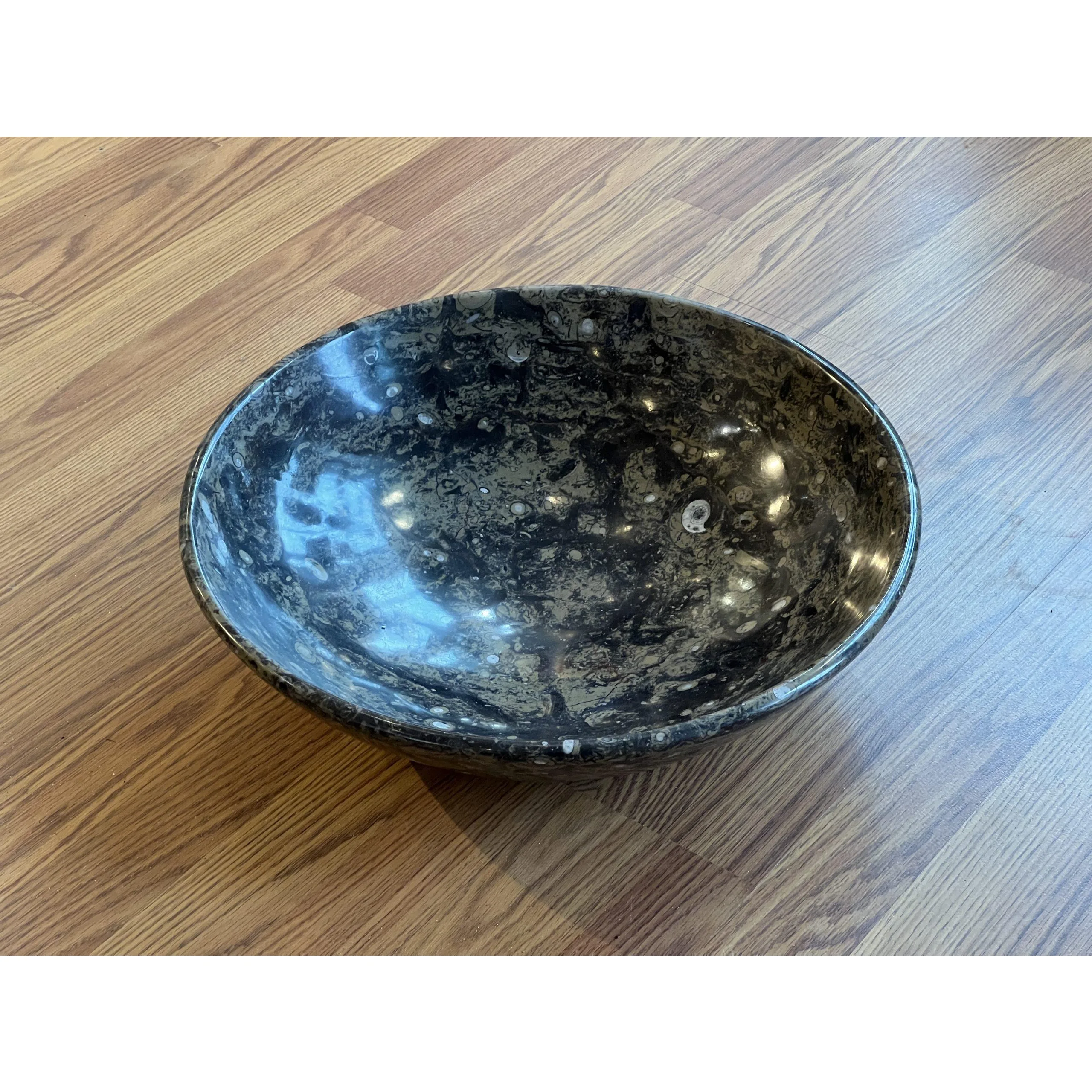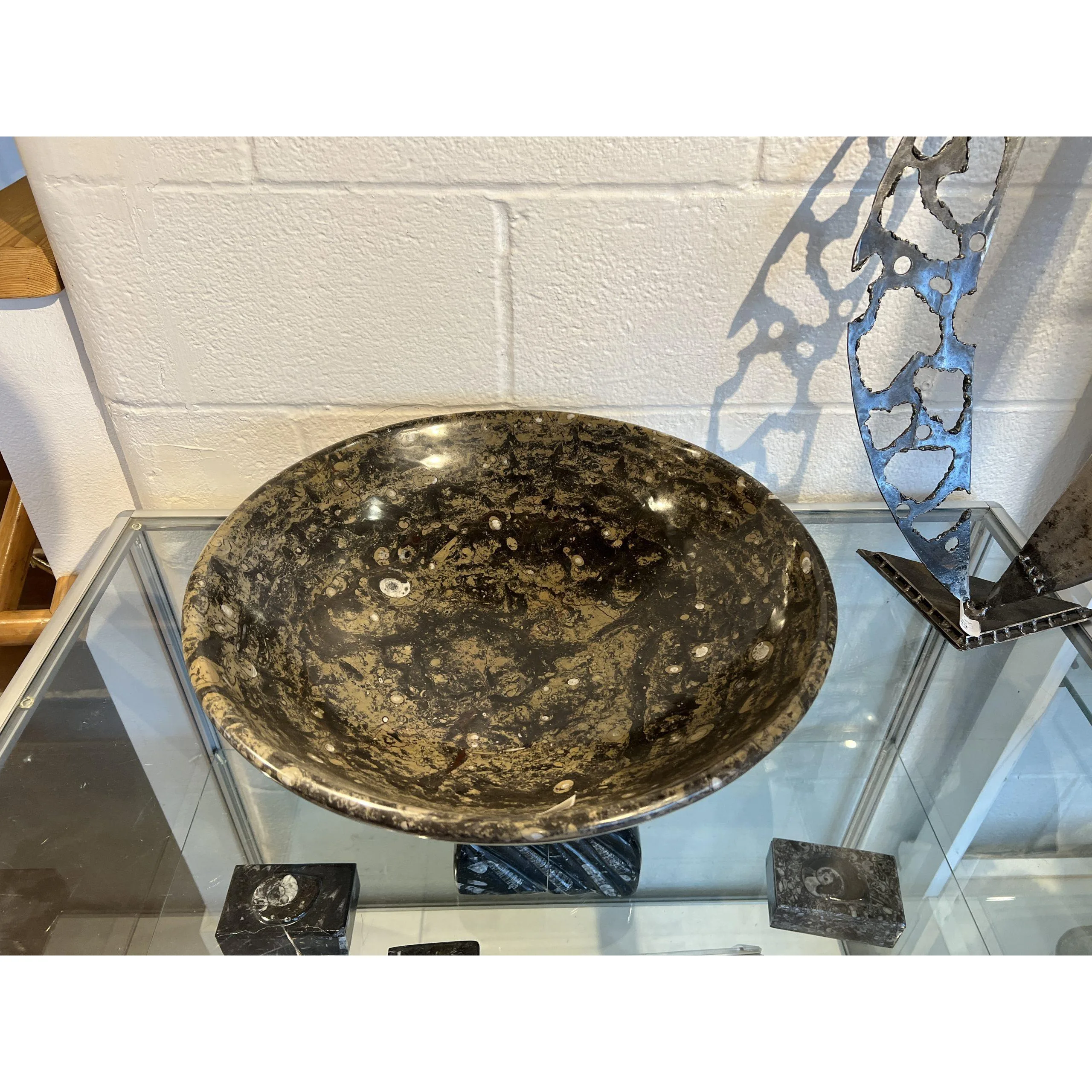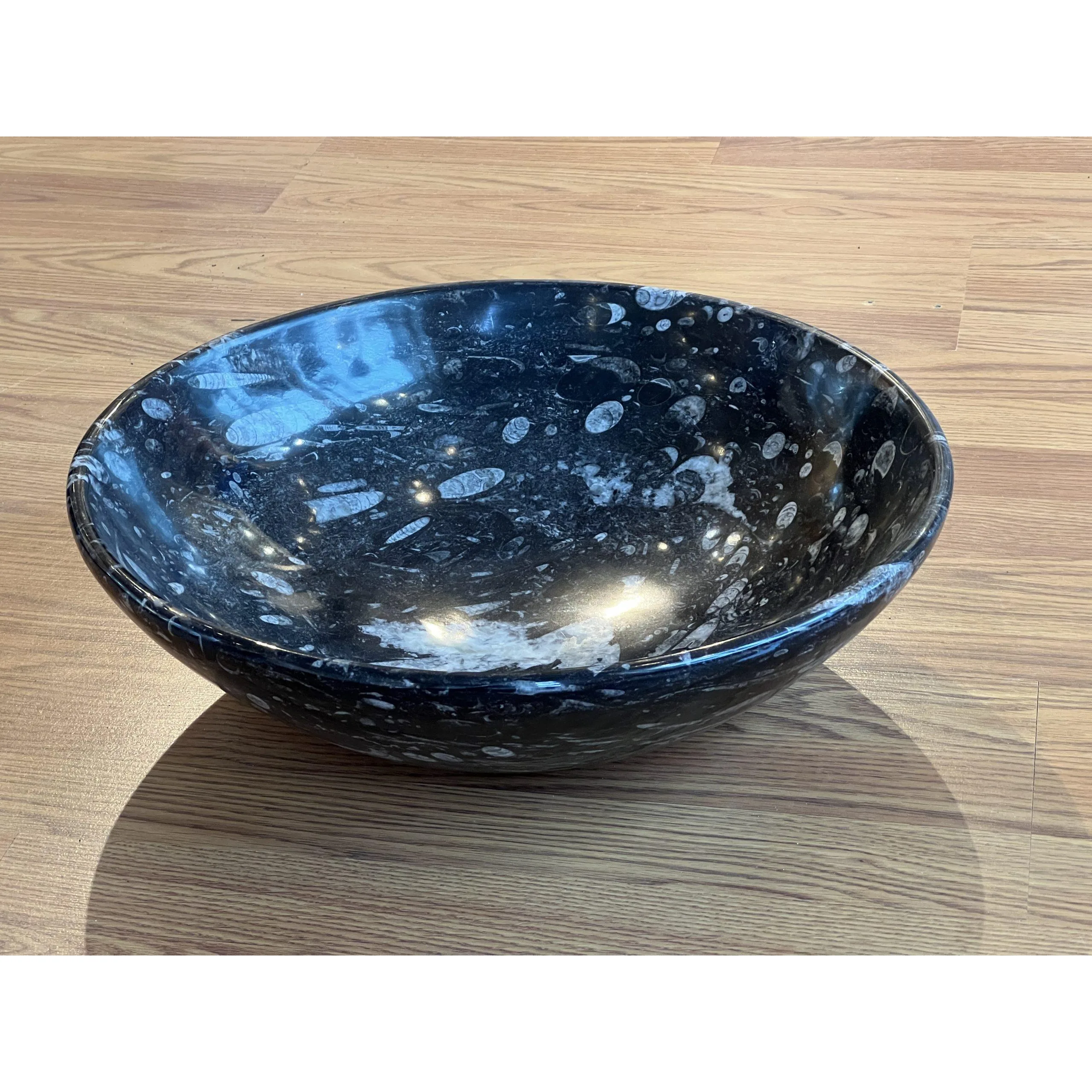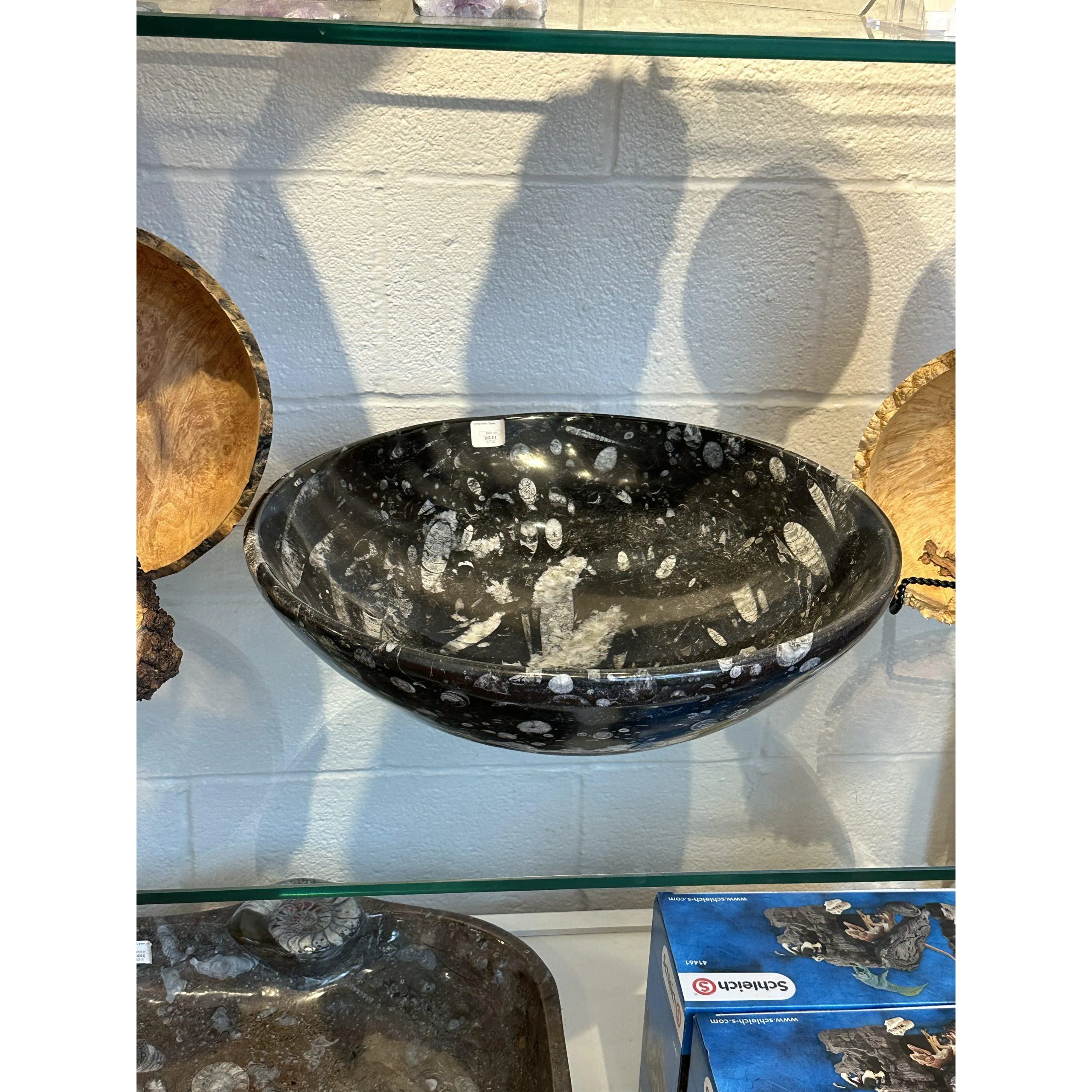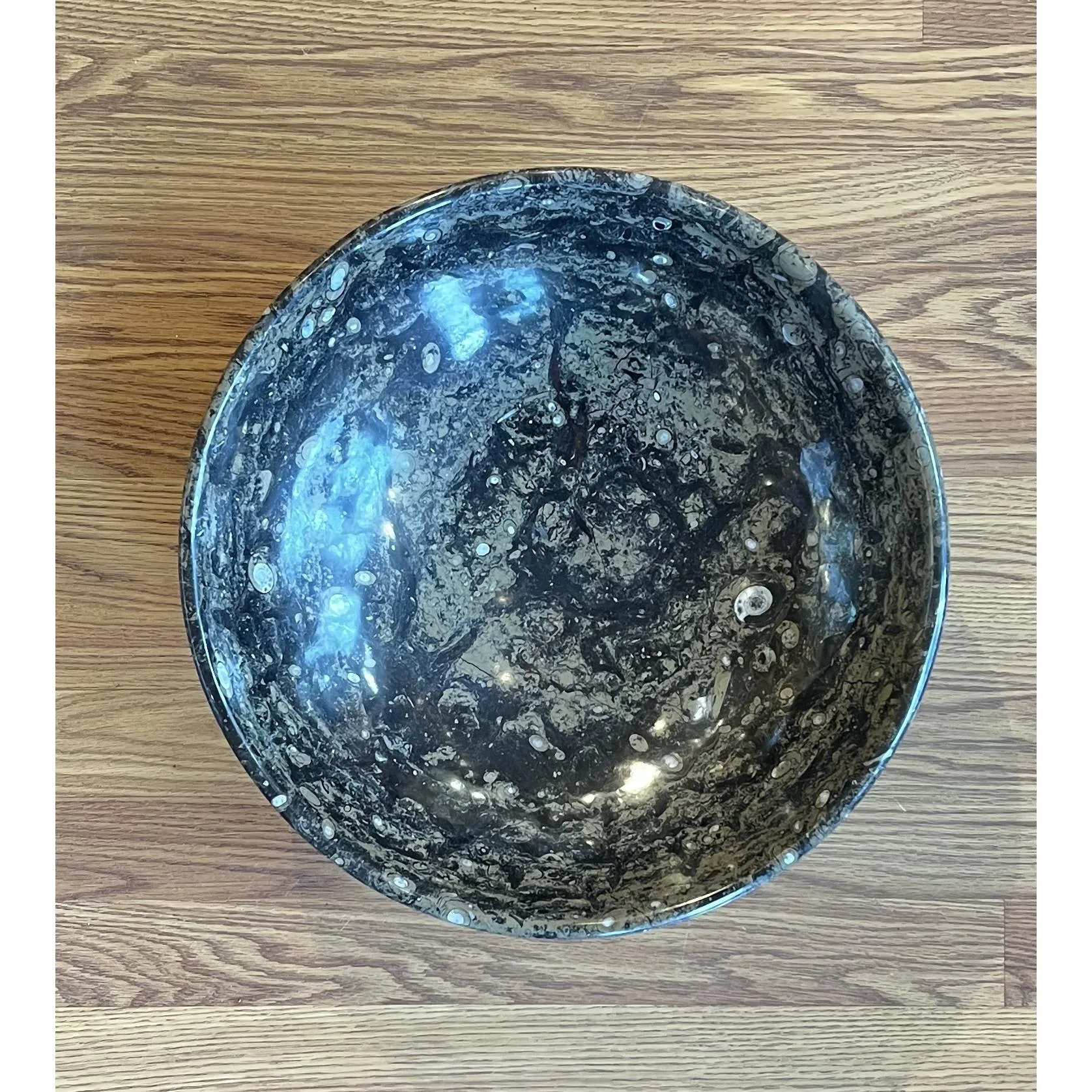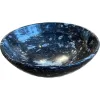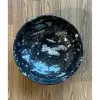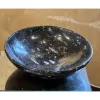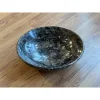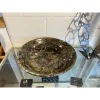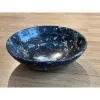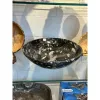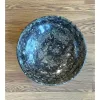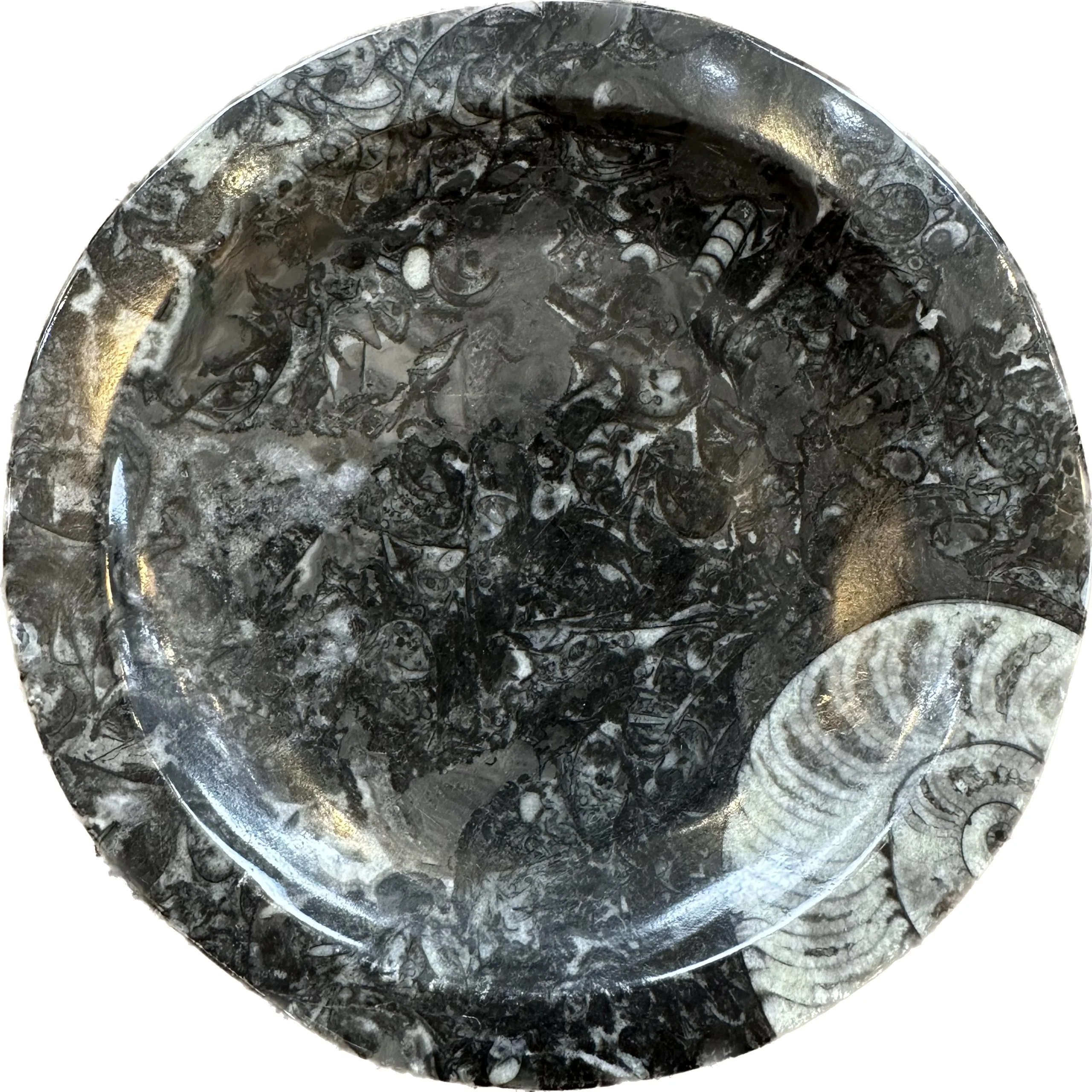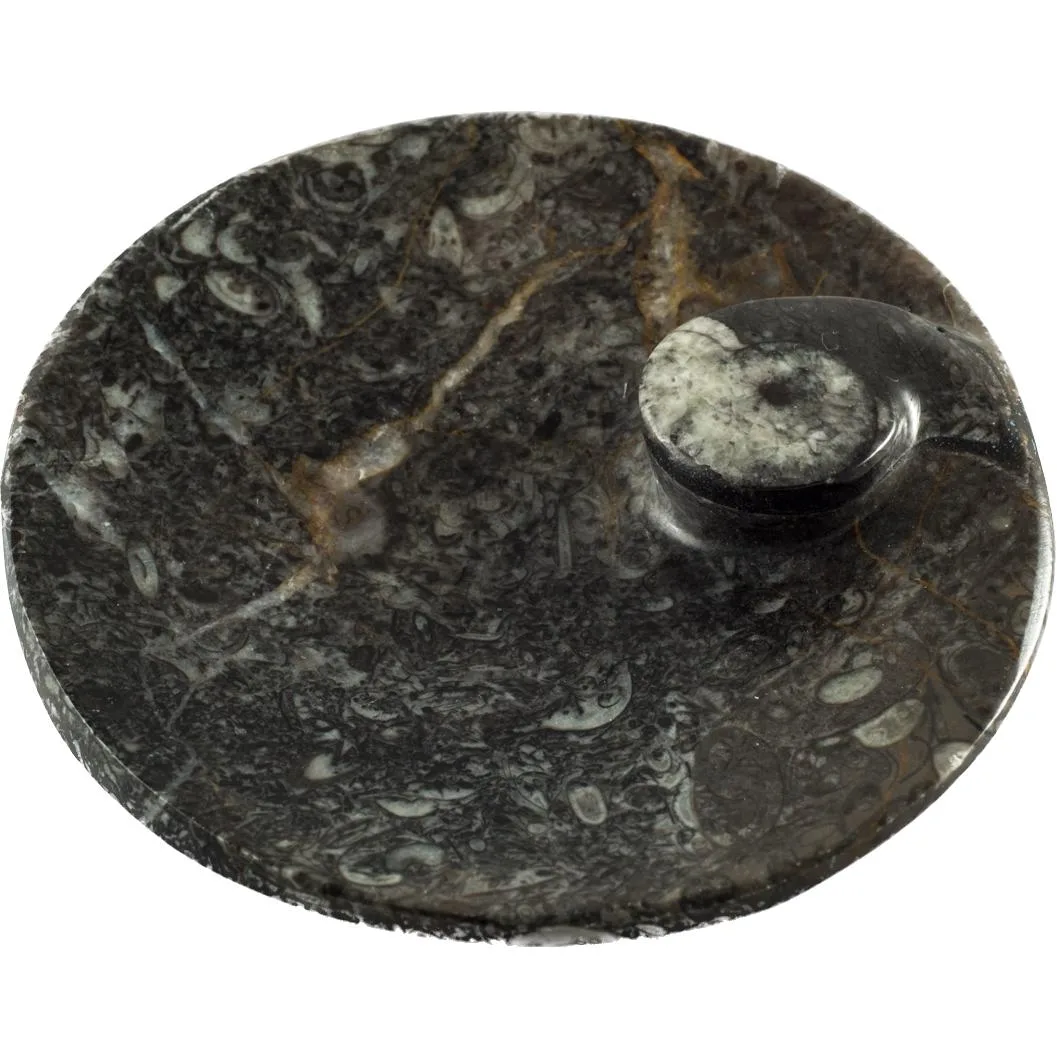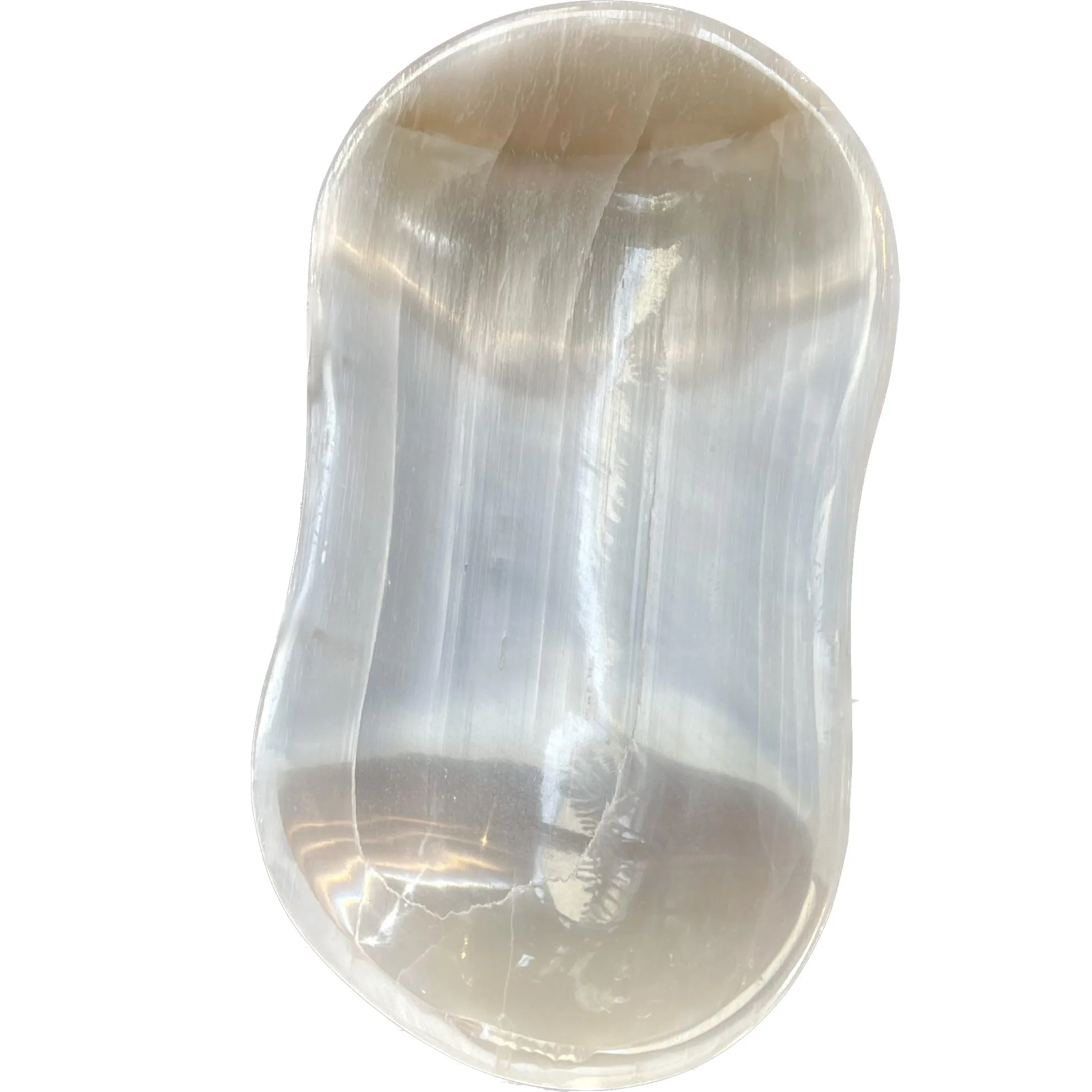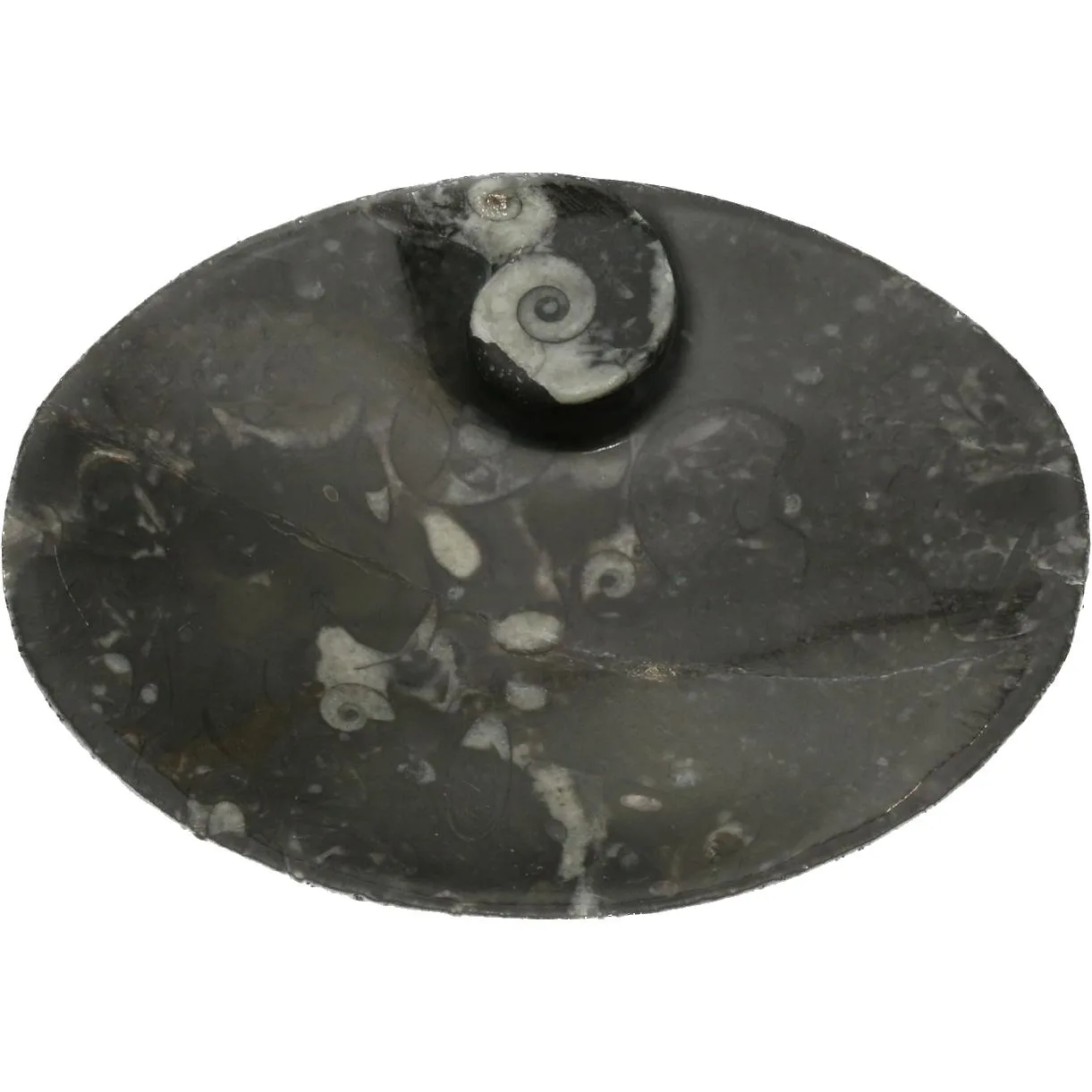Orthoceras bowl, full of fossils.
Orthoceras, meaning “straight horn,” is an extinct genus of cephalopods that lived approximately 400 to 500 million years ago during the Ordovician period. These creatures belonged to the class Orthocerida and were one of the earliest forms of nautiloid cephalopods, ancestors to modern squids, octopuses, and nautiluses.
One of the distinctive features of Orthoceras was its long, straight shell, resembling a slender cone or a pointed horn. These shells could grow up to several feet in length, making them formidable predators in the ancient seas. The shells were divided into chambers, with the animal residing in the largest chamber and using the smaller chambers for buoyancy control. As the Orthoceras grew, it would create new chambers and seal off the old ones, forming a series of interconnected chambers known as a siphuncle.

Orthoceras had a soft body similar to that of modern cephalopods, with tentacles emerging from its head and a sharp beak-like mouth for catching and consuming prey. Their excellent swimming abilities, aided by jet propulsion through water, made them efficient predators in their ancient marine environment.
These ancient cephalopods played a significant role in the ecosystem of the Ordovician seas, serving as both predators and prey. Their fossilized remains are abundant in certain geological formations, providing valuable insights into ancient marine life and ecosystems.

Orthoceras fossils are relatively common and have been found in various parts of the world, including North America, Europe, and North Africa. They are often preserved in sedimentary rocks, particularly limestone and shale, where conditions were favorable for fossilization. The fossilized shells of Orthoceras are highly prized by collectors and paleontologists for their aesthetic beauty and scientific value.

